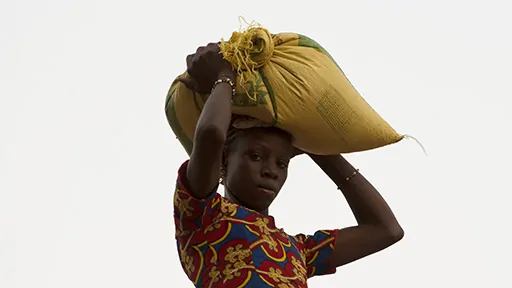Opinion Editorial Archive January, 2018: Economically Viable

Last month, I read an interesting statement. It said that children were not economically viable. That sounds very strange taken out of context. In context, it was from a condensed history of slavery in and from West Africa. The point being made was that slave owners in the Americas did not rely on their slaves to bear children to supply the next generation of slaves. It was more economical for them to buy new slaves from Africa. Viewed in economic terms only, it is a sad but true statement.
The world was shocked a few weeks ago when video footage emerged of a slave auction taking place in Libya. I was surprised at the extent of the shock given how well-documented it is that modern-day slavery exists, and how many organizations are actively trying to fight it. Indeed, there are millions of people around the world held captive under conditions of slavery today. Mauritania only abolished slavery as recently as 1981 (becoming the final country in the world to do so). Neighboring Mali was one of a number of African countries from which 500 modern-day slaves were recently rescued according to an Interpol statement last month.
I was on assignment in Mali, where I took this month's photo, when the Libyan slave auction footage emerged. This young girl had just climbed up a cliff to return to her village after attending the market in the village at the foot of the cliff. She is an indigenous Dogon girl and she makes this journey every five days. Although not a slave, her daily life is arduous and an outsider might easily mistake it for slavery.
The situation in Mali continues to be dire as it enters its sixth year following a military coup. Many Malians have fled to neighboring countries where they continue to live as refugees. In one way, this girl is fortunate to live in one of the least-impacted parts of the country: For most Dogon it would not be economically viable to flee.
It is ironic in this part of the world — where slavery was partly driven by the non-economic viability of children — that children are not only economically viable, they are economically essential to survival. There is little mechanization here, so almost all labor is manual. Most women bear many children for this reason — but also because infant mortality is very high.
A few days ago, the United Nations International Children's Emergency Fund reported that 2017 saw an alarming increase in the deliberate targeting of children in conflict zones around the world. Without children, those zones themselves will become economically non-viable.
If you enjoyed reading this month's opinion editorial, please consider supporting independent, advertising-free journalism by buying us a coffee to help us cover the cost of hosting our web site. Please click on the link or scan the QR code. Thanks!

